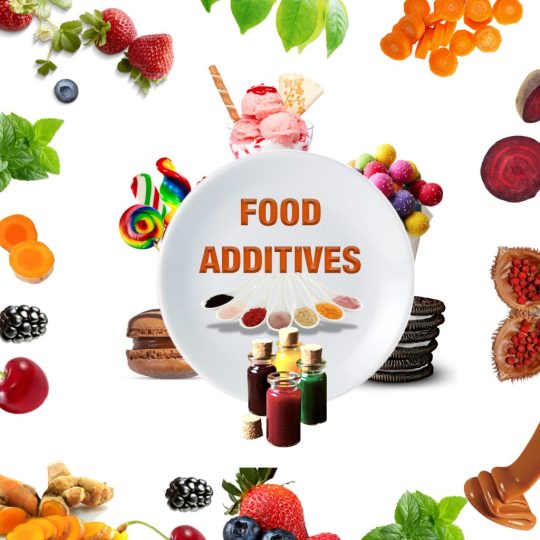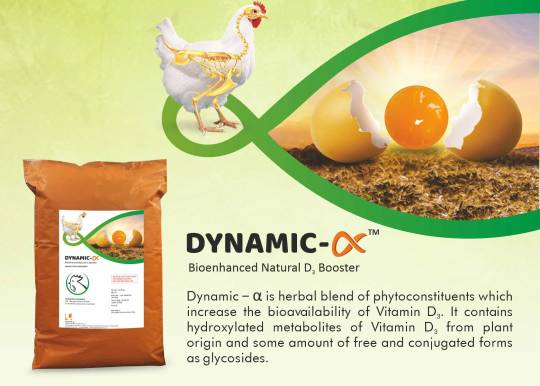Link
0 notes
Link
0 notes
Photo

We are manufacturer of Animal Feed Additive & Animal Nutritional product
#animal feed supplements#Animal Nutrition#Poultry Feed Supplements#aqua feed supplements#cattle feed supplements#swine feed supplement
0 notes
Photo

we are manufacturer of food colors & essential oil
0 notes
Text
Challenging Re-emergence of Necrotic Enteritis in Poultry Losses and Severity of Clostridial Toxins
Refraining the use of antibiotics in poultry feed has aggravated outbreaks of Necrotic enteritis (NE) even more often. NE is an acute Clostridium infection characterized by severe necroses of intestinal mucosa. The disease begins suddenly, with a sharp increase in death rate. The disease usually persists in a flock for 5–10 days, and mortality is 50%. The causative agent is the gram-positive, obligate, anaerobic bacteria Clostridium perfringens. There are two primary Cl. perfringens types, A and C, associated with NE in poultry.
Pathogenesis and clinical signs
Cl. perfringens is a nearly ubiquitous bacteria readily found in soil, dust, faeces, feed, and used poultry litter. It is also a normal inhabitant of the intestines of healthy chickens and turkeys. The enterotoxaemia that results in NE most often occurs either after a change in the intestinal microflora or from a condition that results in damage to the intestinal mucosa (eg, coccidiosis, mycotoxicosis, salmonellosis, parasitic infection, etc).
Chickens at the age of 25 weeks are usually affected, NE is also encountered in hens particularly near the period of the beginning of egg laying or peak egg laying, most commonly associated with coccidiosis. In acute cases, marked congestion of liver, responsible for its dark red to black appearance, is present. Intestinal content is bloody, mixed with necrotic debris and gas bubbles. The diagnosis is based on the distinctive gross lesions. Toxins produced by the bacteria cause damage to the small intestine, liver lesions, and mortality.
While researchers still paving a way to develop a substitute as functional as antibiotics, administration of selected probiotics or competitive cultures has been used successfully to both prevent and treat clinical necrotic enteritis (presumably for prophylactic proliferation of Cl. perfringens).
NOVAPRO, a natural blend of probiotics for digestion and gut health.
The probiotic used in NOVAPRO (viz. Bacillus subtilis, B. coagulans and B. pumilus) are GRAS qualified in the US and qualifies the criteria of QPS as per EFSA for EU countries. They are highly heat stable and forms an endospore to survive extreme environmental conditions of temperature and desiccation.
How does NOVAPRO work as Non-antibiotic Growth Promoter?
Bacillus subtilis, B. coagulans and B. pumilus (Each 5 billion CFU/g) are known for their ability to degrade proteins extra-cellularly. They produce antimicrobial peptides (bacteriocins) which helps in inhibition of certain kinds of entero-pathogens which are harmful to poultry. This combination gets quickly established in the gut, provide growth of friendly bacteria, reduces intestinal pH and drives out harmful pathogens like Cl. perfringens, E. coli and Salmonella species. Additionally, the probiotics peptides enhance immune responses preventing the growth of pathogens.
Features and Benefits
• Probiotics stay viable in water for longer duration
• It has proven compatibility with antibiotics, anti-microbial growth promoters, coccidiostats and acidifiers
• Supports gut health and immune system
• Can withstand pH fluctuations from 3.8 to 9.5
• Low inclusion rate, no withdrawal period and can be administered throughout the lifecycle
Feeding Recommendation
1 g per litre of drinking water
150 – 200 g / tone of feed
0 notes
Text
Swine Feed Supplements |Meta Lean
In the recent past, swine industry has gained important and continuous progress from selection for constantly increasing lean muscle gain and decreasing fat deposition, in order to meet the increasing demand of market and cognizant consumers for quality, tasty and safe meat products.
Increased Profitability
Improved Carcass Traits
Increasing Demand and Market Value
What are the symbolic characteristics of “Lean Meat” ?
Lean meat relatively has less fat and cholesterol content, specially in the prime cuts like ham and loin, etc. Larger longissimus muscle areas, longer carcasses and hypertrophy of the muscle fibres due less fat deposition. Importantly better organoleptic attributes, so does the better market price.
The simplest means to estimate the lean tissue mass in the pigs’ body is the use of B-mode real time ultrasound equipment. This is the preferred method. However, it requires that accurate relationships between ultrasound measurements (loin-eye area and back-fat thickness).
Factors Intervening the Lean Meat Production
A proper interpretation of lean growth curves is important as different factors like genotype, sex, amino acid or energy intake, and environmental stresses may affect lean growth at different stages of growth.During the grower-finisher phase, the difference in lean growth potential between gilts and barrows is approximately 5%, but ranges from 2% to 15% i.e. more lean growth rate in barrows.Between 110 and 176 lb. body weight, the daily lean growth rate is relatively constant in gilts and burrows.
At approximately 176 lb. body weight, the daily lean growth rate starts to decline towards zero when the pig’s mature lean body weight has been reached.Nutrient and energy intake: Sub-optimal intakes of essential nutrients and energy will limit pigs from expressing their lean growth potential. For this reason, practical pig diets are generally over-fortified with the relatively inexpensive nutrients, vitamins and minerals.
Furthermore, close attention should be paid to dietary levels of energy, lysine, and the other essential amino acids and to daily feed intakes when managing grower-finisher pigs.META LEAN (Protein Optimizer for High Lean Growth), A Safe Cure for the Intruding Factors.
Remarkable Lean Meat Gain
Improved Feed Efficiency
Globally Accepted
100% Natural Components
Intensive Research Originated Product
Less Inclusion Levels in the Feed
From practical standpoint, our exclusive product “META LEAN” integrates the diversity of available genotypes (from the fattest to the leanest), along with production and environmental conditions, to set the optimum conditions for lean growth in swine.
“META LEAN” is the remedy for observed trend to some degradation of meat quality with intense selection for muscular growth, particularly with regard to technological and organoleptic characteristics, necessitates taking into account these constraints in feeding;whether one considers fat deposition or lean tissue gain (extent of intramuscular fat).
The use of improved pig genetics for higher growth rate and lean meat percentage has led to deterioration of pig meat quality. “META LEAN” has shown profound impact on improving meat quality and carcass traits. Several research trials on “META LEAN” have showed positive effects on feed efficiency,protein (muscle) deposition and reducing fat oxidation, resulting in improved performance and meat quality (colour, firmness, marbling, etc). This phytogenic feed additive is an effective natural solution with high acceptance by consumers for their safeness and compliance with environmental sustainability.
Feeding Recommendations
1-2 kg per ton of feed or as per veterinarian’s advise
0 notes
Text
Animal Feed Supplements Manufacturer & Herbal Feed Additives In Animal Nutrition
Vinayak Ingredients is one of the largest producers of herbal feed supplements in India. We manufacture our products at the internationally certified feed plants with crucial stages of analysis during storage, production, packaging, and transport. This also includes intensive testing of the products for its best-desired results. The supplements have been tested for its suitability and safety with the feed constituents and animals. The richness of active phytochemicals has made the inclusion levels at its least to earn more profit to farmers by reducing the feed expenses. Consistent in-vivo & in-vitro tests are conducted to upgrade and improve product stability, storage period and administration with the most convenient way like through water and/or feed.
animal feed Supplements manufacturer & herbal feed additives in animal nutrition
1.Poultry Feed Supplements
2.Cattle Feed Supplements
3.Swine Feed Supplements
4.Aqua Feed Supplements
0 notes
Link
0 notes

